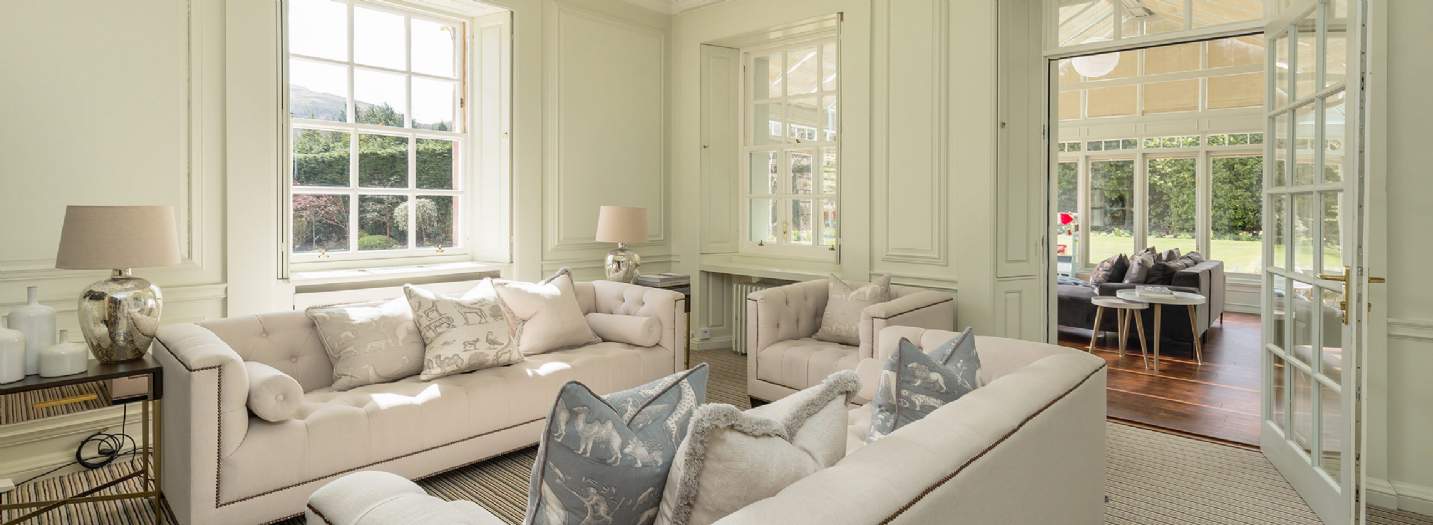Prime activity across Scotland is defying expectations, with an annual increase in £500,000+ sales. However, realistic pricing is key to enabling transactions as stock levels rise. Although well-presented homes in sought-after markets are attracting premiums, appropriate pricing will generate better interest
Faisal Choudhry, Director, Savills Residential Research
Resilience across Scotland’s equity-driven prime residential market continued in Q2 2023. There was a 9% increase in net agreed sales above £500,000 compared to Q2 2022, according to data provider TwentyCi. In comparison, prime regional markets outside London saw a -18% drop over the same period.
There were 6% more net agreed sales from £300,000 to £500,000 across Scotland in Q2 2023 compared to Q2 2022.
Scotland’s market below £300,000, which is more exposed to the ever-increasing cost of borrowing saw -9% fewer net agreed sales in Q2 2023 compared to Q2 2022.
Whilst prime sales have risen, new supply has outweighed demand over the last three months. Furthermore, according to home.co.uk, larger homes across the country are currently spending 9% more time on the market compared to last year. Consequently, the number of available properties in Scotland above £500,000 has soared to its highest level since 2016.
With increased availability and the impact of high inflation on buyer budgets, the number of price changes for Scottish properties above £500,000 almost doubled in Q2 2023 compared to Q2 2022.
Despite strong demand levels, more choice for buyers against a backdrop of higher interest rates and market uncertainty will apply downward pressure on prime Scottish prices for the remainder of 2023.
The pressure on values is apparent, with a -0.1% drop in prime prices in the three months to June 2023, according to the Savills Prime Scotland Index. Following three consecutive quarterly falls, prime Scotland prices are -0.7% lower than a year ago. This is the first annual fall since September 2015, after the introduction of Scotland’s Land and Buildings Transaction Tax.
Despite the drop, prime Scottish prices are 16.2% higher since the beginning of the pandemic over three years ago.
Prime prices outside London saw an average annual fall of -3.5% during Q2 2023, as pressure on buyers’ budgets is felt most keenly across debt-driven markets closest to the capital.
The biggest pressure on prime Scottish prices is in those markets that are most dependent on mortgage lending, such as flats in urban locations.
The upper end of the market, which is primarily driven by cash buyers, continues to attract strong interest and premiums for realistically priced homes.
Indeed, Scotland’s prime country house market, which represents good value relative to other locations, saw a slight increase in prices of 0.5% in the three months to June 2023.
The drop in prime Scotland prices over the last year has been more profound in some areas than others.
Prime Edinburgh City prices fell by -2.4% in the year to Q2 2023, mainly due to softening demand for flats and properties ranging from £2.5 million to £3 million, with overall stock levels increasing. Meanwhile, there is strong demand for family homes up to £1.2 million and trophy homes above £5 million.
Constrained supply is still an issue in the country areas outside Edinburgh, although prices have dropped for larger homes in rural areas. On the other hand, prices in the hotspots of St Andrews in Fife and Gullane in East Lothian continue to rise.
Whilst the prime market in Scotland’s heartland of Perthshire is more challenging compared to previous years, there was an increase in prime prices of 0.8% in the three months to June 2023. This was due to constrained supply and ongoing demand for best-in-class properties and relatively smaller, modern homes as well as older properties that have been refurbished. There is still an appetite across Perthshire for green spaces, gardens and especially views, in particular waterfront views, which can add a significant premium to values.
In the west, prices for prime flats in Glasgow have fallen slightly over the last year. However, ongoing demand for family homes in Newton Mearns, Pollokshields and the West End pushed prime Glasgow prices up by 0.8% compared to Q2 2022.
Outside Glasgow, prime price growth of 0.2% was supported by properties with sea views, water access and proximity to major travel routes, including Argyll and Ayrshire.
In the North East, the top end of the market above £1 million is subdued, especially in the Aberdeen City area. However, prices in Aberdeen City’s peripheral locations, southern Kincardineshire, Angus, Broughty Ferry in Dundee and Moray, have seen a slight uptick over the last year.
Going forward, underlying demand for prime Scottish properties provides significant cause for optimism. During the second quarter of 2023, the number of buyers registering with Savills to find a prime Scottish home was up 12% on the same months in 2022 and 128% on the pre-pandemic 2019 level.
But with mortgage rates accelerating again, we are starting to see increased price sensitivity, particularly in markets that are more reliant on borrowing. This means we are likely to see further pressure on pricing over the remainder of this year and into the next.
With stock levels continuing to rise, sellers who are realistic on pricing will continue to command the most interest and, ultimately, achieve the best prices.
< View our latest Q2 2023 updates here.
For more information, please contact your nearest Scotland office or arrange a market appraisal with one of our local experts.
